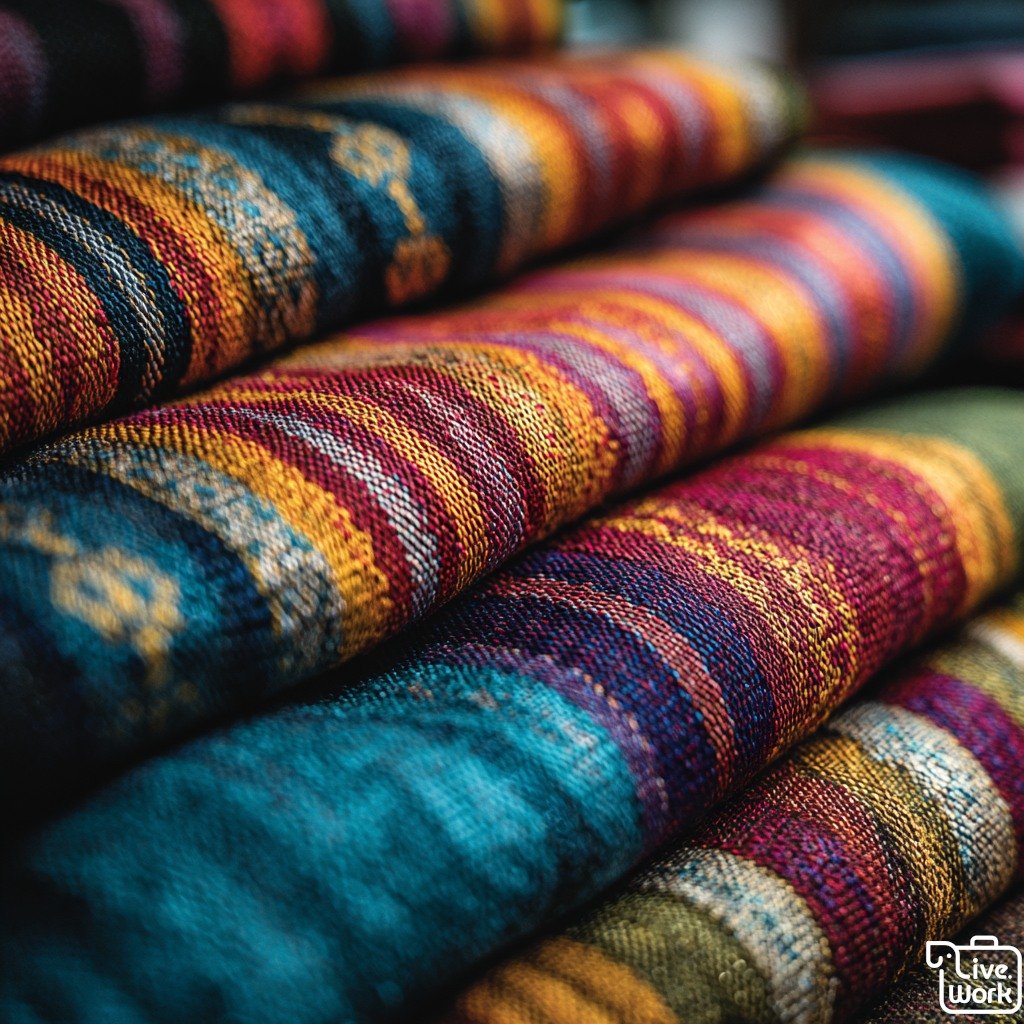Woven Legacies: The Cultural and Artistic Significance of Thai Textiles
Thailand’s textile tradition is a vibrant tapestry that reflects the country’s deep-rooted cultural values, artistic excellence, and community resilience. More than just cloth, Thai textiles are storytelling canvases—each piece is imbued with history, meaning, and the distinctive identity of its region.
🧵 A Heritage Handwoven Through Time
The art of Thai textile-making spans centuries and regions, with each area offering its own unique style and technique. In Chiang Mai and across Northern Thailand, Lanna silk is known for its rich sheen and intricate brocade patterns. In contrast, Isaan’s cotton textiles from the Northeast boast bold colors and geometric patterns that reflect the rhythms of rural life and local folklore.
These textiles are traditionally woven by hand using backstrap or foot-treadle looms, techniques passed down from generation to generation, often within the same family. The weaver’s knowledge is considered sacred, a cultural inheritance that carries the values, myths, and social memory of a community.
🌾 From Thread to Fabric: The Process
The journey of Thai textiles begins with locally sourced raw materials such as silk cocoons or cotton bolls. These are dyed using natural plant-based substances—indigo, turmeric, and teak leaves—to achieve vibrant, long-lasting hues. The dyeing process itself is deeply ritualistic in some communities, involving chants, seasonal timing, and offerings to ancestral spirits.
Weaving is a meditative and deliberate process. Patterns are not just decorative; they are coded symbols representing fertility, harmony, protection, or regional pride. A single piece of cloth can take weeks or even months to complete, especially in complex mudmee (ikat) or supphasit (royal pattern) weaves.
🪡 Innovation Meets Tradition
In recent decades, Thai textile artisans have breathed new life into their traditions. Collaborations with designers have brought heritage textiles to global fashion runways and luxury interior markets. Designers are reimagining old motifs into modern styles—dresses, handbags, and home decor—without compromising on authenticity.
Government and NGO initiatives have also supported cooperatives and women’s weaving groups, helping them access new markets and maintain economic independence. This blending of old and new not only keeps the traditions alive but also makes them economically viable.
🌍 Cultural, Economic, and Environmental Impact
Textile production plays a significant role in Thailand’s rural economy. Entire communities revolve around weaving, where the craft provides sustainable income and social cohesion. Beyond economics, it reinforces cultural identity, particularly among ethnic minority groups like the Karen, Hmong, and Tai Lue, who use distinctive patterns to signal clan membership or marital status.
Moreover, many artisans now embrace eco-conscious practices—using organic cotton, natural dyes, and low-impact tools. These sustainable approaches are attracting ethically-minded consumers worldwide, positioning Thai textiles as a model for slow fashion.
🧶 Beyond the Fabric: A Living Tradition
To wear or display a Thai textile is to connect with a living tradition. Whether it's the silken elegance of a Pha Sin skirt at a temple ceremony or a hand-loomed cushion cover in a modern Bangkok café, these textiles evoke a sense of place, purpose, and pride.
For travelers, visiting weaving villages or textile museums—such as the Queen Sirikit Museum of Textiles in Bangkok or the Ock Pop Tok Living Crafts Centre in Luang Prabang (which showcases regional weaving, including Thai styles)—offers a profound insight into the cultural landscape of the country.
Final Thoughts 💬
Thai textiles are threads of memory, identity, and resilience. They transcend fashion to become vessels of meaning, innovation, and sustainability. By appreciating or purchasing a piece of Thai textile, you’re not only embracing a beautiful art form—you’re supporting the livelihoods of skilled artisans and helping to preserve one of Southeast Asia’s most treasured cultural legacies.
